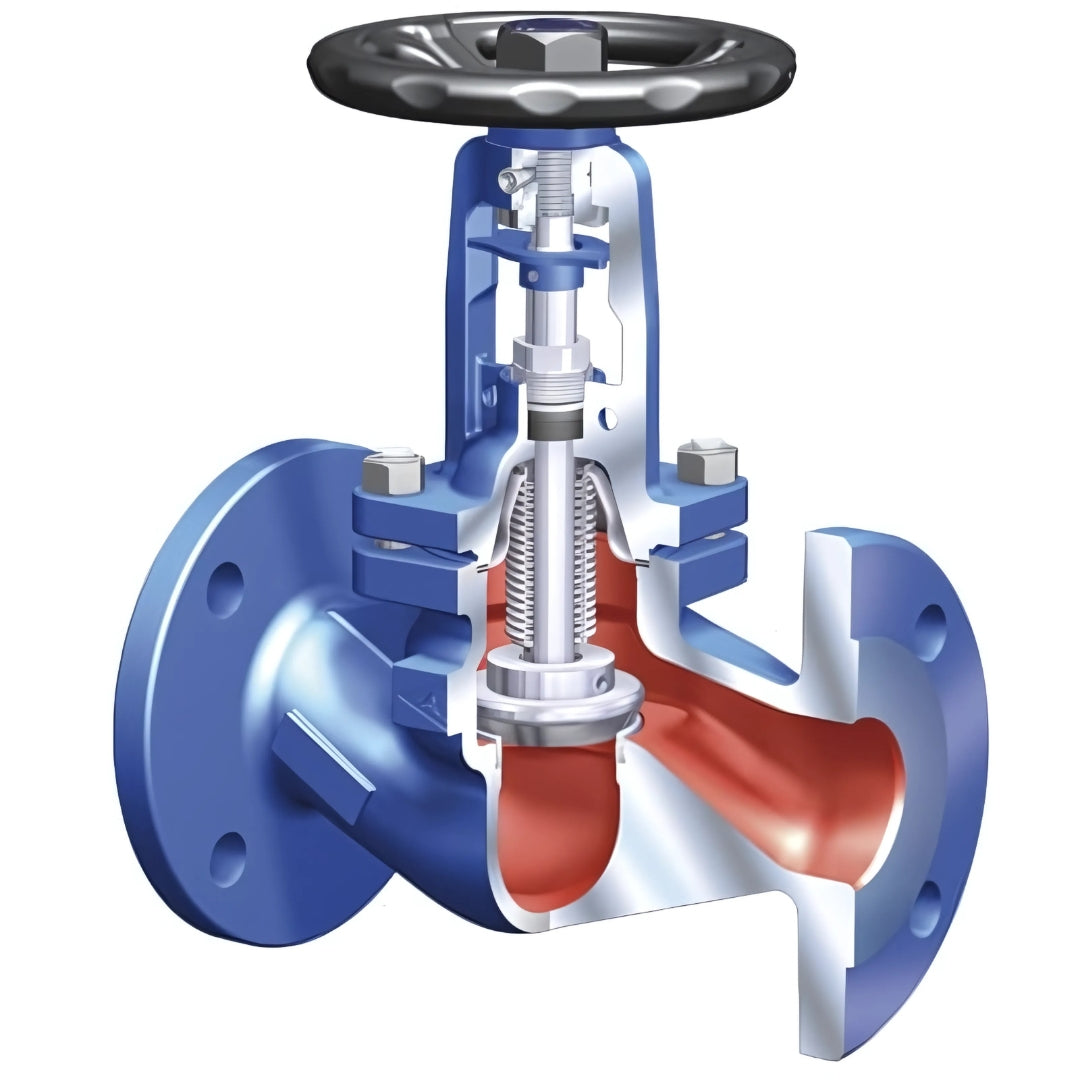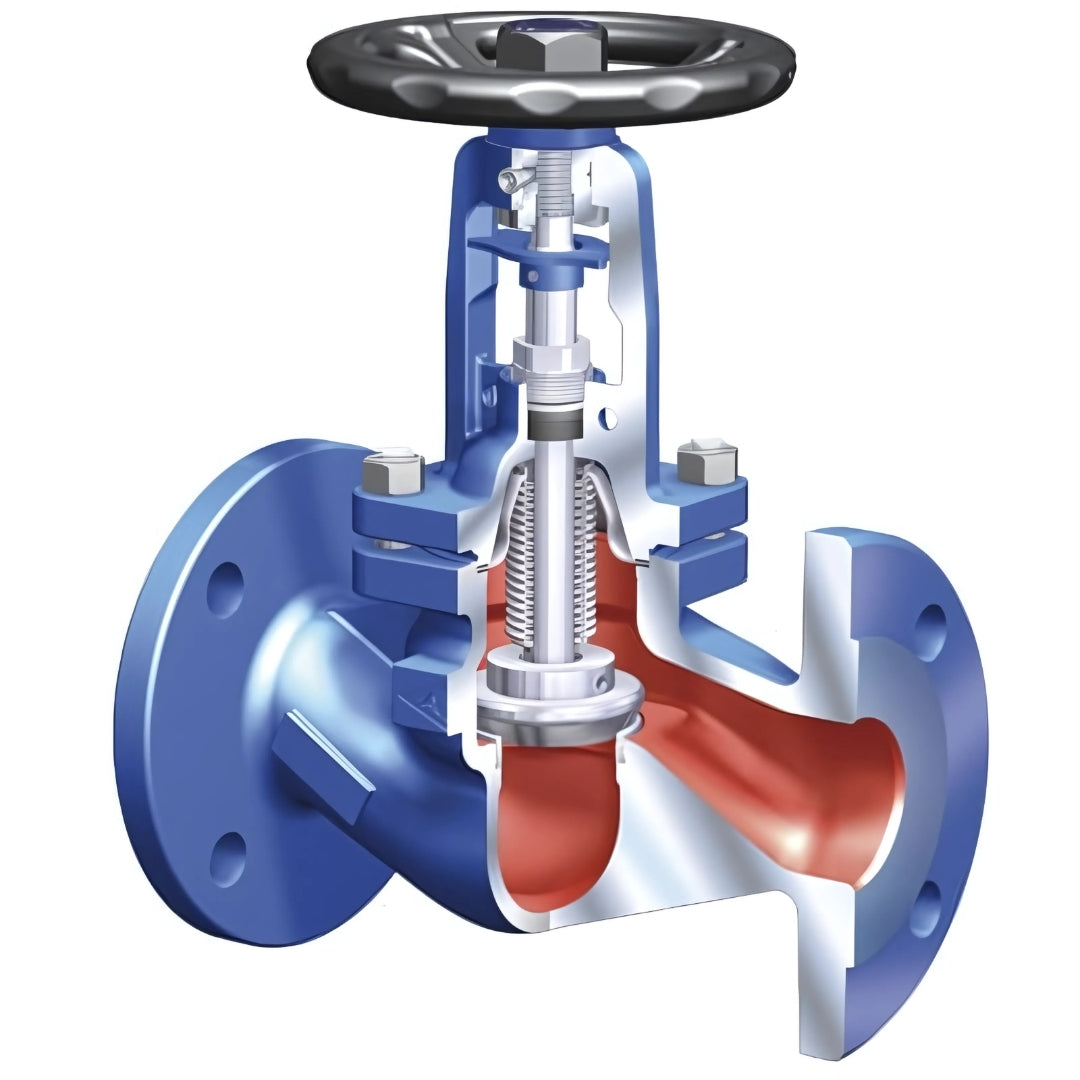Steam Valves
FABA+ Bellows Sealed Globe Valve (Flanged PN40, Cast Steel Body)
FABA+ Bellows Sealed Globe Valve (Flanged PN40, Cast Steel Body)
Couldn't load pickup availability
The FABA+ Bellows Sealed Globe Valve with PN40 flanged ends and a cast steel body is built for high-performance isolation and flow regulation in steam, gas, and process fluid systems. Designed for demanding industrial environments, this valve features a multi-layer stainless steel bellows seal that eliminates stem leakage — ensuring maximum containment, environmental protection, and operator safety.
The cast steel body delivers high mechanical strength, excellent thermal resistance, and compatibility with elevated pressure conditions. Rated to PN40, the valve operates reliably in pipelines up to 40 bar, making it ideal for use in power generation, petrochemical facilities, and high-temperature steam systems. The combination of a rising stem, bellows seal, and backseat guarantees dual sealing protection and long-term operational integrity, even under frequent thermal cycling.
As part of the trusted ARI Armaturen FABA+ range, this valve provides exceptional control precision, low maintenance requirements, and superior performance in mission-critical applications where leakage is not an option.
Key Features
Cast Steel Body
Rugged and thermally stable for use in high-pressure, high-temperature process environments.
PN40 Flanged Connections
Handles pressures up to 40 bar, suitable for heavy-duty steam and fluid networks.
Bellows Seal Technology
Zero stem leakage design using stainless steel bellows for full emission containment and operational safety.
Backseat Safety Feature
Provides secondary stem sealing when the valve is fully open, allowing safe maintenance of gland packing.
Accurate Throttling and Shut-Off
Globe valve design ensures smooth modulation and tight shut-off with minimal pressure drop.
Optimised for Industrial Applications
Perfect for steam boilers, thermal oil systems, power stations, and chemical processing lines.
Share

FAQ's
What is the difference between a valve and an actuator?
What types of actuators are available?
The main types of actuators are:
Pneumatic actuators – use compressed air for fast, reliable operation.
Electric actuators – use electrical power for precise control.
Hydraulic actuators – use fluid pressure for high-torque applications.
Each type offers unique advantages depending on the environment, media, and system control needs.
How do I choose the right actuator for my valve?
To select the correct actuator, consider:
Valve type and torque requirement
Power source available (air, electric, or hydraulic)
Operating environment (temperature, humidity, hazardous area)
Control signal type (on/off or modulating)
Matching actuator torque and compatibility with the valve’s ISO mounting ensures reliable performance.
What are the main types of valves used in automation?
The most common valves in automated systems include:
Ball valves – for tight shutoff and quick operation.
Butterfly valves – for larger flow control with compact design.
Globe valves – for precise throttling and flow regulation.
Check valves – to prevent backflow.
Gate valves – for full bore flow isolation.
What’s the difference between a double-acting and spring-return actuator?
Double-acting actuators use air (or power) to both open and close the valve.
Spring-return actuators use air to open (or close) the valve, and a built-in spring to automatically return it to a safe position when power or air is lost — ideal for fail-safe operation.
How often should valves and actuators be serviced?
Regular maintenance intervals depend on operating conditions, but a good rule of thumb is to inspect every 6–12 months.
This includes checking for leaks, lubrication, seal wear, and actuator responsiveness to prevent unexpected downtime.

